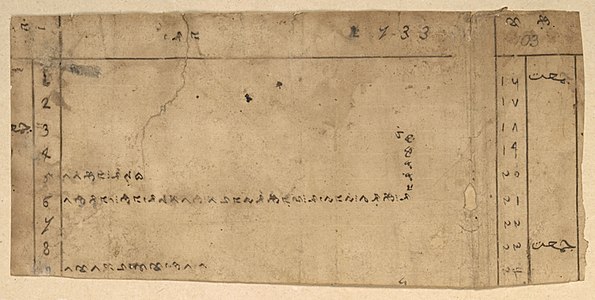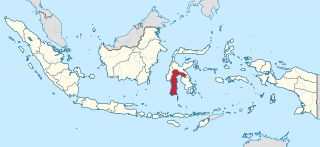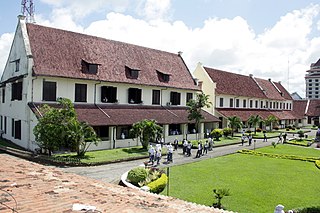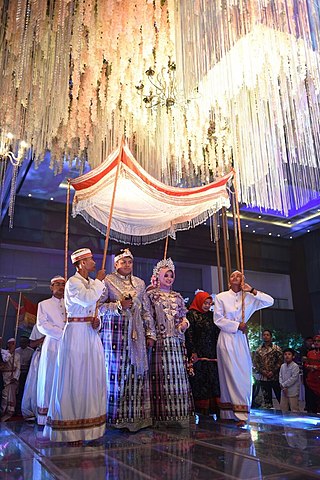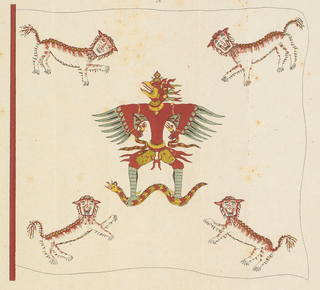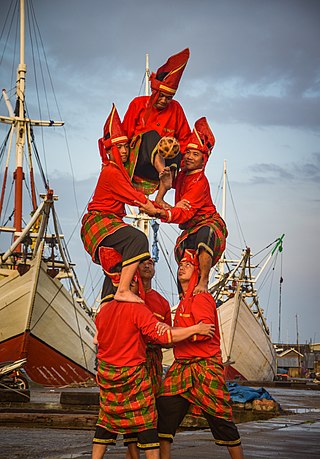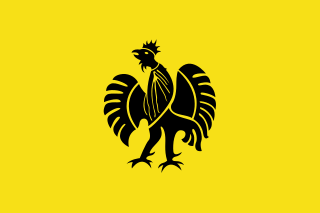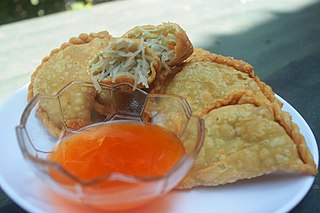| 𑻱𑻳𑻬𑻦𑻶𑻥𑻳𑻱𑻨𑻵𑻷𑻥𑻡𑻱𑻴𑻷𑻨𑻨𑻳𑻮𑻳𑻣𑻴𑻢𑻳𑻷𑻨𑻳𑻤𑻴𑻧𑻴𑻷𑻭𑻳𑻦𑻴𑻦𑻮𑻶𑻠𑻷𑻭𑻳𑻦𑻴𑻥𑻭𑻴𑻰𑻴𑻠𑻷𑻭𑻳𑻦𑻴𑻣𑻶𑻮𑻶𑻤𑻠𑻵𑻢𑻷 |
| ia–tommi anne. ma'gau'. na nilipungi. nibundu'. ri tu Talloka. ri tu Marusuka. ri tu Polombangkenga. |
| On the reign [of Tumapa'risi' Kallonna] he too was surrounded and attacked by the Tallo, the Maros , [and] the Polombangkeng people. |
| 𑻠𑻭𑻱𑻵𑻢𑻷𑻭𑻳𑻦𑻮𑻶𑻷𑻨𑻱𑻡𑻱𑻢𑻷𑻰𑻳𑻯𑻵𑻷𑻦𑻴𑻨𑻳𑻣𑻱𑻰𑻴𑻭𑻴𑻷 |
| Karaenga. ri Tallo'. naagaanga. siewa. Tunipasuru'. |
| The Karaeng Tallo that fought him was Tunipasuru'. |
| 𑻱𑻭𑻵𑻠𑻮𑻵𑻨𑻷𑻱𑻳𑻬𑻠𑻴𑻥𑻤𑻰𑻴𑻷𑻨𑻳𑻠𑻨𑻷𑻱𑻳𑻥𑻢𑻬𑻶𑻯𑻤𑻵𑻭𑻷 |
| areng kalenna. iang kumabassung. nikana. I Mangayoaberang. |
| His given name, may i not be damned [for insolently calling his name], was I Mangayoaberang. |
| 𑻥𑻡𑻯𑻴𑻠𑻷𑻭𑻳𑻥𑻭𑻴𑻰𑻴𑻷𑻨𑻳𑻠𑻨𑻷𑻣𑻦𑻨𑻮𑻠𑻨 |
| ma'gauka. ri Marusu'. nikana. Patanna Langkana. |
| [Meanwhile, the ruler] that ruled in Maros [on that time] was Patanna Langkana. |
| 𑻱𑻭𑻵𑻥𑻦𑻵𑻨𑻷𑻨𑻳𑻠𑻨𑻷𑻦𑻴𑻥𑻥𑻵𑻨𑻭𑻳𑻤𑻴𑻮𑻴𑻧𑻴𑻯𑻬𑻷 |
| areng matena. nikana. Tumamenang ri Bulu'duaya. |
| His posthumous name is Tumamenang ri Bulu'duaya. |
| 𑻱𑻭𑻵𑻠𑻮𑻵𑻨𑻱𑻳𑻬𑻠𑻴𑻥𑻤𑻰𑻴𑻷𑻱𑻳𑻥𑻣𑻰𑻶𑻤𑻷 |
| areng kalenna iang kumabassung. I Mappasomba. |
| His given name, may i not be damned, was I Mappasomba. |
| 𑻱𑻭𑻵𑻣𑻥𑻨𑻨𑻷𑻨𑻳𑻠𑻨𑻷𑻱𑻳𑻧𑻱𑻵𑻢𑻴𑻭𑻡𑻷 |
| areng pamana'na. nikana. I Daeng Nguraga. |
| His proper name was I Daeng Nguraga. |
| 𑻦𑻴𑻥𑻡𑻱𑻴𑻠𑻷𑻭𑻳𑻤𑻪𑻵𑻷𑻱𑻨𑻨𑻷𑻠𑻭𑻱𑻵𑻮𑻶𑻯𑻵𑻷𑻨𑻳𑻠𑻨𑻬𑻧𑻱𑻵𑻨𑻱𑻳𑻣𑻰𑻱𑻳𑻭𑻳𑻷𑻠𑻠𑻨𑻱𑻳𑻧𑻱𑻵𑻥𑻰𑻭𑻶𑻷 |
| Tuma'gauka. ri Bajeng. ana'na. Karaeng Loe. nikanaya Daenna I Pasairi. kakanna I Daeng Masarro. |
| He who ruled in Bajeng [Polombangkeng] is the son of Karaeng Loe, named Daenna I Pasairi, older sibbling of I Daeng Masarro. |
| 𑻱𑻳𑻬𑻥𑻳𑻨𑻵𑻷𑻰𑻭𑻳𑻤𑻱𑻦𑻷𑻦𑻴𑻥𑻡𑻱𑻴𑻠𑻷𑻭𑻳𑻰𑻭𑻤𑻶𑻨𑻵𑻷𑻭𑻳𑻮𑻵𑻠𑻵𑻰𑻵𑻷𑻭𑻳𑻠𑻦𑻳𑻢𑻷𑻭𑻳𑻪𑻥𑻭𑻷𑻭𑻳𑻪𑻳𑻣𑻷𑻭𑻳𑻥𑻧𑻮𑻵𑻷 |
| iaminne. sari'battang. Tuma'gauka. ri Sanrabone. ri Lengkese'. ri Katingang. ri Jamarang. ri Jipang. ri Mandalle'. |
| This [I Pasairi] were sibblings with those that ruled in Sanrabone, in Lengkese', in Katingang, in Jamarang, in Jipang, [and] in Mandalle. [lower-alpha 2] |
| 𑻦𑻴𑻪𑻴𑻱𑻳𑻰𑻳𑻰𑻭𑻳𑻤𑻦𑻷𑻥𑻮𑻮𑻰𑻳𑻣𑻴𑻯𑻵𑻢𑻱𑻰𑻵𑻷𑻷 |
| tujui sisari'battang. ma'la'lang sipue–ngaseng. |
| seven sibblings, all half-umbrella'd [=ruled]. [lower-alpha 3] |
| 𑻱𑻳𑻬𑻥𑻳𑻨𑻵𑻠𑻭𑻱𑻵𑻷𑻨𑻳𑻮𑻳𑻣𑻴𑻢𑻳𑻷𑻭𑻳𑻡𑻱𑻴𑻠𑻦𑻮𑻴𑻯𑻷 |
| iaminne Karaeng. nilipungi. ri Gaukang Tallua. |
| This Karaeng [Tumapa'risi' Kallonna] is supported by The Three Gaukang. [lower-alpha 4] |
| 𑻠𑻭𑻱𑻵𑻢𑻭𑻳𑻮𑻠𑻳𑻬𑻴𑻷𑻱𑻢𑻡𑻢𑻳𑻷𑻡𑻴𑻭𑻴𑻧𑻬𑻷𑻦𑻴𑻥𑻢𑻰𑻬𑻷𑻦𑻴𑻦𑻶𑻤𑻶𑻮𑻶𑻠𑻷𑻦𑻴𑻰𑻱𑻶𑻥𑻦𑻬𑻷 |
| Karaenga ri Lakiung. angngagangi. Gurudaya. tu Mangngasaya. tu Tomboloka. tu Saomataya. |
| Kareng Lakiung accompanies Gurudaya, [along with] Mangngasa, Tombolo' and Saomata people, |
| 𑻱𑻪𑻶𑻭𑻵𑻢𑻳𑻷𑻠𑻮𑻵𑻨𑻷𑻱𑻳𑻥𑻥𑻠𑻰𑻳𑻷𑻤𑻭𑻶𑻤𑻶𑻰𑻶𑻷𑻨𑻣𑻥𑻵𑻦𑻵𑻢𑻳𑻷 |
| anjorengi. kalenna. imamakasi. Baro'boso'. napammenténgi. |
| there they set camp, in Baro'boso', on alert, |
| 𑻱𑻳𑻬𑻥𑻳𑻨𑻱𑻡𑻱𑻷𑻰𑻳𑻦𑻴𑻪𑻴𑻷𑻦𑻶𑻣𑻶𑻮𑻶𑻤𑻱𑻠𑻵𑻢𑻷 |
| iami naagaang. situju. tu Polombangkenga. |
| they joined together [to] face Polombangkeng people. |
| 𑻠𑻮𑻵𑻨𑻠𑻭𑻱𑻵𑻢𑻷𑻰𑻳𑻬𑻡𑻢𑻳𑻷𑻰𑻴𑻮𑻵𑻠𑻬𑻷 |
| kalenna Karaenga. siagángi. Sulengkaya. |
| The Karaeng [Tumapa'risi' Kallonna] himself accompanies Sulengkaya, |
| 𑻭𑻣𑻶𑻩𑻳𑻨𑻳𑻷𑻨𑻣𑻥𑻵𑻦𑻵𑻢𑻳𑻷𑻰𑻳𑻬𑻡𑻢𑻳𑻷𑻦𑻴𑻰𑻴𑻧𑻳𑻬𑻢𑻷𑻦𑻴𑻥𑻨𑻴𑻪𑻴𑻯𑻷𑻦𑻴𑻤𑻶𑻭𑻳𑻰𑻮𑻶𑻯𑻷 |
| Rappocini. napammenténgi. siagángi. tu Sudianga. tu Manujua. tu Borisalloa. |
| ready in Rappocini along with Sudiang, Manuju, and Borisallo people. |
| 𑻦𑻴𑻦𑻮𑻶𑻠𑻷𑻰𑻳𑻬𑻡𑻱𑻷𑻠𑻮𑻵𑻨𑻷𑻱𑻳𑻧𑻱𑻵𑻥𑻰𑻭𑻶𑻷𑻱𑻳𑻬𑻥𑻳𑻨𑻱𑻡𑻱𑻷𑻰𑻳𑻦𑻴𑻪𑻴𑻷𑻠𑻮𑻵𑻨𑻠𑻭𑻱𑻵𑻢𑻷 |
| tu Talloka. siagaang. kalenna. I Daeng Masarro. iami naagaang. situju. kalenna Karaenga. |
| Tallo people and I Daeng Masarro himself faced The Karaeng. |
| 𑻠𑻭𑻱𑻵𑻢𑻭𑻳𑻧𑻦𑻷𑻰𑻳𑻬𑻡𑻢𑻳𑻷𑻩𑻠𑻴𑻭𑻳𑻧𑻳𑻬𑻷𑻦𑻥𑻥𑻢𑻴𑻷𑻨𑻣𑻥𑻵𑻦𑻵𑻢𑻳𑻷𑻰𑻳𑻬𑻡𑻢𑻳𑻷𑻣𑻩𑻵𑻮𑻵𑻠𑻷𑻣𑻦𑻮𑻰𑻷𑻤𑻶𑻦𑻶𑻥𑻨𑻱𑻳𑻷 |
| Karaenga ri Data'. siagángi. Cakkuridia. Tamamangung. napammenténgi. siagángi. Paccellekang. Pattallassang. Bontomanai'. |
| Karaeng Data accompanies Cakkuridia, in Tamamangung he readies themself along with Paccellekang, Pattallasang, and Bontomanai' [people], |
| 𑻦𑻴𑻥𑻭𑻴𑻰𑻴𑻠𑻷𑻨𑻱𑻡𑻱𑻷𑻰𑻳𑻦𑻴𑻪𑻴𑻷 |
| tu Marusuka. naagaang. situju. |
| Maros people, they faced. |
| 𑻮𑻵𑻤𑻠𑻳𑻷𑻥𑻤𑻴𑻧𑻴𑻠𑻳𑻷𑻨𑻳𑻣𑻮𑻭𑻳𑻥𑻳𑻷𑻦𑻴𑻦𑻮𑻶𑻠𑻦𑻴𑻥𑻭𑻴𑻰𑻴𑻠𑻷𑻦𑻴𑻣𑻶𑻮𑻶𑻤𑻠𑻵𑻢𑻷 |
| le'baki. ma'bunduki. nipalarimi. tu Talloka tu Marusuka. tu Polombangkenga. |
| Once the battle started, the Tallo', Maros, and Polombangkeng people had already fled. |
| 𑻦𑻴𑻥𑻭𑻴𑻰𑻴𑻠𑻷𑻮𑻭𑻳𑻨𑻷𑻭𑻳𑻦𑻥𑻥𑻢𑻴𑻷𑻦𑻴𑻮𑻴𑻰𑻴𑻠𑻳𑻷𑻥𑻨𑻱𑻴𑻭𑻳𑻥𑻭𑻴𑻰𑻴𑻷 |
| tu Marusuka. larina. ri Tamamangung. tulusuki. manaung ri Marusu'. |
| Maros people went from Tamamangung, directly to Maros. |
| 𑻦𑻴𑻣𑻶𑻮𑻶𑻤𑻠𑻵𑻢𑻷𑻥𑻢𑻴𑻮𑻶𑻭𑻶𑻥𑻥𑻳𑻷𑻤𑻳𑻰𑻵𑻬𑻷𑻨𑻥𑻤𑻳𑻰𑻵𑻬𑻥𑻨𑻱𑻳𑻷 |
| tu Polombangkenga. mangnguloro'–mami. biseang. na ma'biseang manai'. |
| Polombangkeng people stretch out their oars and pedal up [back to Polombangkeng]. |
| 𑻦𑻴𑻦𑻮𑻶𑻠𑻷𑻥𑻮𑻭𑻳𑻥𑻦𑻥𑻭𑻳𑻦𑻮𑻶𑻷 |
| tu Talloka. malari mantama ri Tallo' |
| Tallo people ran back to Tallo' [region] |
| 𑻨𑻰𑻴𑻮𑻴𑻥𑻱𑻵𑻷𑻨𑻰𑻴𑻭𑻶𑻠𑻳𑻬𑻶𑻷𑻠𑻭𑻱𑻵𑻢𑻷𑻦𑻴𑻥𑻣𑻭𑻳𑻰𑻳𑻠𑻮𑻶𑻨𑻷𑻱𑻦𑻥𑻭𑻳𑻦𑻮𑻶𑻷 |
| nassulu' mae. nasuro kio'. Karaenga. Tumapa'risi Kallonna. antama ri Tallo'. |
| [Then] they sent out a request to meet The Karaeng, Tumapa'risi' Kallonna. Thus he entered Tallo'. |
| 𑻦𑻪𑻤𑻢𑻳𑻱𑻳𑻷𑻮𑻮𑻷𑻨𑻳𑻦𑻶𑻯𑻨𑻷𑻨𑻳𑻭𑻣𑻶𑻱𑻳𑻷 |
| tuju bangngi i. lalang. nitoana. nirappói. |
| Seven nights he was there, entertained and given betel nut. |
| 𑻱𑻳𑻬𑻥𑻳𑻪𑻶𑻷𑻨𑻰𑻳𑻦𑻮𑻳𑻥𑻶𑻷𑻠𑻭𑻱𑻵𑻢𑻷𑻭𑻳𑻡𑻶𑻯𑻷𑻠𑻭𑻱𑻵𑻢𑻷𑻭𑻳𑻦𑻮𑻶𑻷𑻡𑻮𑻭𑻢𑻷𑻱𑻳𑻬𑻢𑻰𑻵𑻷𑻭𑻳𑻤𑻭𑻴𑻡𑻨𑻳𑻠𑻵𑻮𑻴𑻯𑻷 |
| iaminjo. nasitalli'mo. Karaenga. ri Gowa. Karaenga. ri Tallo'. gallaranga. ia– ngaseng. ri baruga nikelua. |
| These [mentioned below] thus sworn: The Karaeng Gowa, The Karaeng Tallo', [along with] every gallarrang in balairung. |
| 𑻱𑻳𑻬𑻱𑻳𑻬𑻨𑻥𑻶𑻷𑻦𑻱𑻴𑻷𑻱𑻣𑻰𑻳𑻱𑻵𑻯𑻱𑻳𑻷𑻡𑻶𑻯𑻷𑻦𑻮𑻶𑻷𑻱𑻳𑻬𑻥𑻶𑻨𑻩𑻮𑻭𑻵𑻯𑻦𑻷 |
| ia–iannamo. tau. ampasiewai. Gowa. Tallo'. iamo nacalla. rewata. |
| [That] anyone who makes Gowa and Tallo' hostile to each other, will surely be cursed by the gods. |




